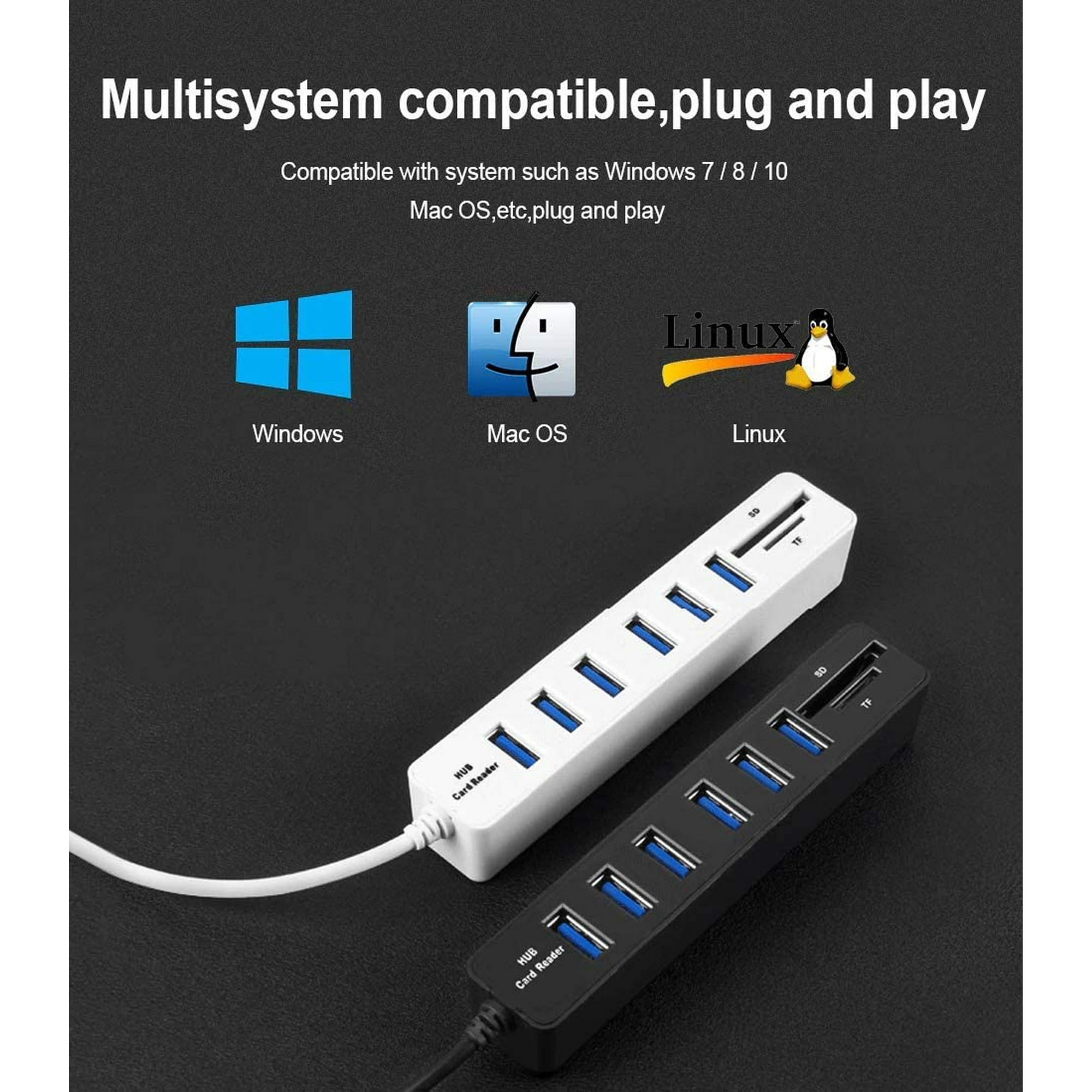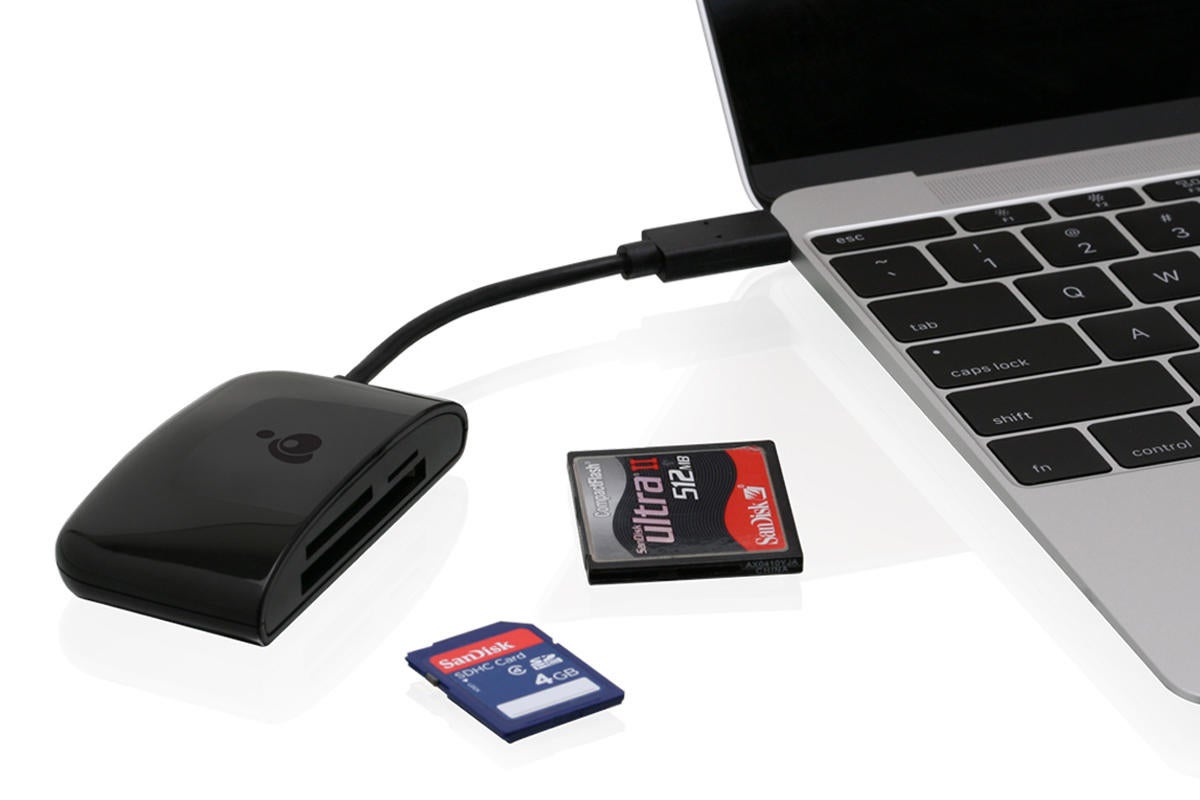Delete the card’s icon from the desktop and pull your card out of the SD card slot. Pull it in again and see if you can access files stored on the card. Resetting the SMC. Try resetting the SMC (System Management Controller), if you still experience problems. Apple suggests doing this if your Mac does not recognize external devices. The USB-C to SD Card Reader transfers high-resolution photos and videos at UHS-II speeds to your Mac, 11-inch iPad Pro, or 12.9-inch iPad Pro (3rd generation). Designed so it won't block your other ports, it works with UHS-II SD cards and is backward compatible with other SD cards and adapters.
- Installing a smart card reader on your Mac isn't as simple as you may think. Find out how to install a CAC reader for Mac in our handy step-by-step guide! Installing a smart card reader on your Mac isn't as simple as you may think. Find out how to install a CAC reader for Mac.
- The USB-C to SD Card Reader transfers high-resolution photos and videos at UHS-II speeds to your USB-C–enabled Mac or iPad. Designed so it won’t block your other ports, it works with UHS-II SD cards and is backwards compatible with other SD cards and adapters.
- Ensure your CAC reader works with Mac
- Check to ensure your Mac accepts the reader
- Check your Mac OS version
- Check your CAC’s version
- Update your DOD certificates
- Guidance for Firefox Users
- Look at graphs to see which CAC enabler to use
Step 1: Purchase a Mac Friendly CAC Reader
Purchase a CAC reader that works for your Mac. There are only a couple that you can choose from and I’ve listed them below.
If you already have a CAC reader and it isn’t Mac friendly, you could update the firmware, however, for the non-tech savvy people out there, it’s probably better to just purchase a new one and save the headache – they’re only ~$11-13 dollars.
Best Mac Compatible CAC USB Readers
Best Mac Compatible CAC Desk Readers
Step 2: Plug in and Ensure It’s Accepted
Once you have your CAC reader, plug it into your Mac and ensure your computer recognizes it. If you have one of the CAC readers we suggested above, then you should be good to go.
If for some reason your CAC reader isn’t working, you may need to download the appropriate drivers for your CAC reader. You can find these drivers on the Reader’s Manufacturer Website.
Step 3: Update Your DOD Certificates

Now that you have your CAC reader connected and accepted on your Mac computer, it’s time to ensure you have the right certificates in order to access DOD CAC required web pages.
Procedure for Chrome and Safari
- Type ⇧⌘U (Shift + Command + U) to access your Utilities
- Find and Double click “Keychain Access”
- Select “Login” and “All Items”
- Download the following five files and double click each once downloaded so as to install in your Keychain Access.
- When you double-click the Mac Root Cert 3 and 4, you’ll need to tell your browser to always trust them. Click the button like you see below:
Additional Steps for Firefox
If you’re using Mozilla Firefox as your primary browser, you’re going to need to perform some additional steps. First, perform the same steps that you did for Chrome and Safari. Afterwards, follow these additional steps to get started.
- Download All Certs zip and double click to unzip all 39 files
- While in Firefox, click “Firefox” on the top left, then “Preferences”
- Then Click “Advanced” > “Certificates” > “View Certificates”
- Then Click “Authorities” and then “Import”
- Import each file individually from the “AllCerts” folder. When you do this, the below box will popup. Check all three boxes and click “OK”
Step 4: Download and install CAC Enabler
Choosing the right CAC enabler can be pretty tricky. It all depends on what OS you have installed, how you installed it, and even what kind of CAC Card you have!

In order to get the right enabler, be sure to visit our trusty guide to Mac CAC Enablers! It’ll walk you through exactly which enabler is right for you.
CAC Access at Home Success
Now that you have a CAC reader, certificates, and a CAC Enabler, you should now be able to access any CAC-enabled website and log on using your CAC password and data.
Common Reasons Why Your CAC Card Won’t Work On Your Mac
Ensure Your CAC Card Meets the Standards: In order for your CAC card to work, it must meet the minimal requirements. Currently, there are only four types of CAC cards that can be used. The ensure you have the right CAC card for online access, flip your CAC card to the back and if you have one of the below numbers written on the top left, then you are good to go:
- G&D FIPS 201 SCE 3.2
- Oberthur ID one 128 v5.5 Dual
- GEMALTO DLGX4-A 144
- GEMALTO TOP DL GX4 144
If you do not have any of the above written on the back, then proceed to your nearest PSD to get a new CAC card issued.
The MicroSD card has a long way to become the most thing you should buy after a new smartphone (except for Apple iPhone).
This storage system will give you additional capacity from 2 GB to massive 512 GB just in one small piece with a millimeter thick. But, in modern laptop and notebook, MicroSD slot barely had a place, including the new MacBook Pro.
So how to put a MicroSD card in a MacBook Pro?
Apple has released a new version of MacBook Pro each year since its announcement in 2006. Yet, none of them comes with MicroSD slot onboard. Therefore, we need a new method to connect this tiny card with the notebook seamlessly.
Contents
#1 Using MicroSD to SDXC adapter
The MicroSD manufacturer has many times released its product with additional SDXC/SDHC (sometimes called Mini SD) adapter. This device would allow you to link your MicroSD card to any device with an SDXC port on it.
Luckily, some older MacBook Pro has an SDXC port already. You can find it on the left side of the device. The port should be sized as 24 mm wide and a few millimeters in diameter. Once it connected, the MacBook will recognize it as a new device and you can start using it like USB flash drive anyway.
Memory Card Reader For Mac Pro
In case you don’t have an SDXC adapter, it was priced as low as $3 on Amazonand works smoothly with all MicroSD brands and performance specifications.
#2 If your MacBook Pro has no SDXC port, but a USB port: use card reader
In recent years, Apple has stepped forward to eliminate SDXC, leaving its customers with no port to plug in their SD card to the laptop. However, as long as the USB port is still available, there is a decent chance to connect your Micro SD.
All you need is a card reader, a device that can connect MicroSD to MacBook through the USB port. The price of this product may vary, but I’m not advising you to buy the cheapest one since it tends to be not durable and sometimes not working properly during intensive usage, like transferring files.
One of the most reliable card reader adapters is from Vanja which costs about $8. Customers also say the product is good enough for its price. But, you don’t need to focus on my recommendation. There are many similar products with various brands offering competitive costs while maintaining supreme quality.
Software For Cpap Sd Cards
#3 MacBook Pro with only USB-C port
Apple also released a new kind of MacBook Pro which only comes with merely one single USB-C port, not a standard USB-A. The solution is pretty much the same as the last one; you have to buy a card reader, but with a USB-C connector.
The price of the USB-C version is a little bit higher than the regular type since it was a new and arguably better performance type of USB. For example, a USB-C card adapter from Vanja costs $9 and gives you an SDXC slot, MicroSD slot, USB-A connector as well a USB-C connector.
You can find similar products from other brands if you wish.
Conclusion
So, there are three ways to put MicroSD into your MacBook Pro.
If your MacBook Pro has an SDXC port, you only need an SDXC adapter. Meanwhile, if it only has a USB port, the most comfortable way is by using a card reader. The same method also can be applied to MacBook Pro with the single USB-C port.